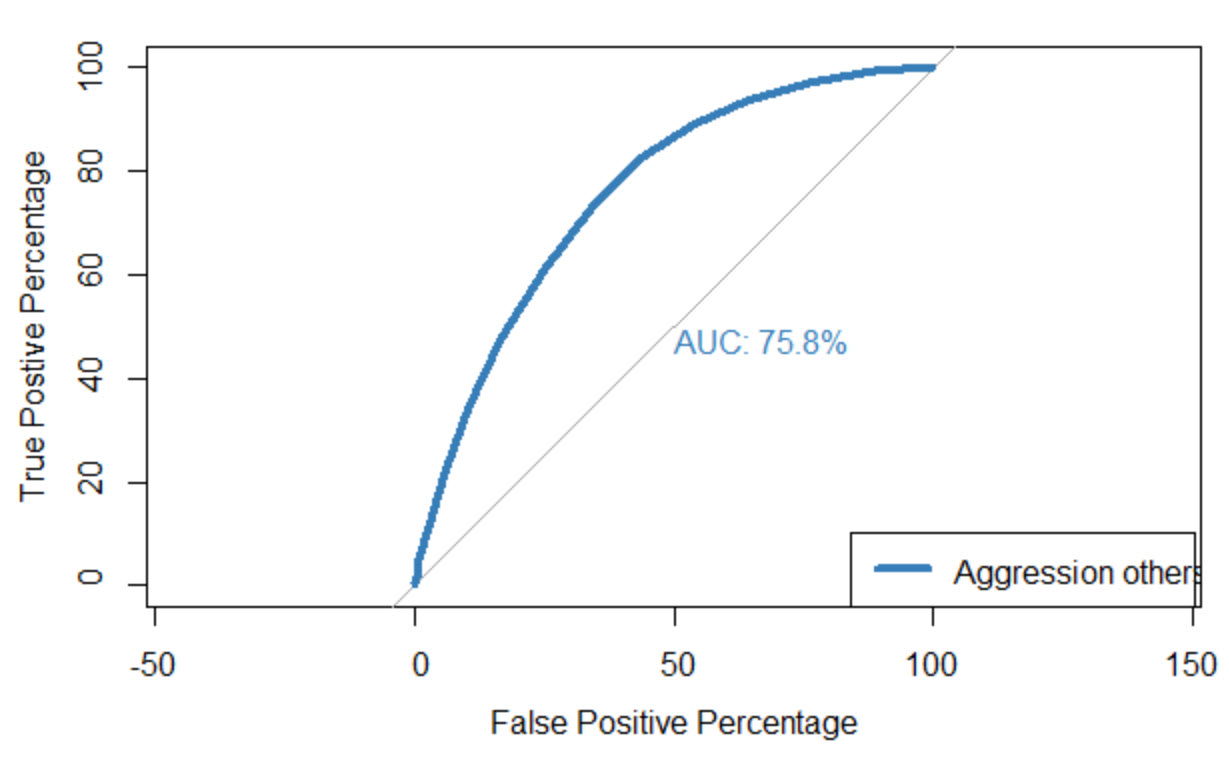Cincinnati Children’s Screening Tool for Predicting Aggression Can Help Reduce Violence
Research By: Drew Barzman, MD | Michael Sorter, MD
Post Date: June 27, 2022 | Publish Date: June 22, 2022

Largest study ever on aggression and violence by children and adolescents within the hospital
The rise in school shootings and other forms of aggression in child and adolescent inpatient psychiatric units has specialists alarmed. Researchers at Cincinnati Children’s Hospital Medical Center identified the need for a screening tool to accurately identify a patient’s risk of aggression. The goal is to prevent violence in those who may be prone to it.
The study, published in Psychiatric Quarterly was written by members of the Cincinnati Children’s Child and Adolescent Forensic Research Program.
The findings from the largest study about aggression outcomes for children and adolescents support the use of Brief Rating of Aggression by Children and Adolescents (BRACHA) as an effective tool for predicting aggression (excluding self-aggression) during inpatient psychiatric admissions. The study included more than 10,000 patients admitted from the emergency department to inpatient psychiatry, from April 1, 2010 to June 30, 2021.
“We began developing this instrument about 20 years ago which started with 67 questions and over time, reduced it to 14 of the most predictive questions,” said Drew Barzman, MD, director of the Child and Adolescent Forensic Research Program and co-founder of the study.
Barzman and his team created the BRACHA. Licensed psychiatric social workers deploy the risk-assessment tool by asking psychiatric patients in the emergency department a series of questions to determine if they are a high-risk for aggressive behavior. Trained hospital staff measure those outcomes using the Overt Aggression Scale (OAS) twice daily, to measure type, severity, and frequency of aggression. The OAS uses a four-point scale and measures each patient’s aggression as verbal or physical. The behavior is classified as a potential threat to themselves, others, or objects. Cincinnati Children’s integrated the BRACHA into the electronic medical records so that it can be collected for every emergency department psychiatry evaluation and inpatient psych admit starting around 2010.
The staff uses the scores on a scale of 0-14 to immediately determine the risk level of the patients and make recommendations for a care plan for all lengths of stay. Use of the BRACHA score has been very helpful for caregivers and patients because inpatient units can plan for the arrival of the patients to optimize treatment and safety.

“The BRACHA has improved safety and quality of care at Cincinnati Children’s,” said Michael Sorter, MD, director of the Division of Child and Adolescent Psychiatry and co-founder of the study. “We will continue working to refine the results to provide the best care possible to our patients.”
Researchers reviewing the predictive validity of BRACHA for inpatients compared results to the Historical Clinical Risk Management-20 (HCR-20) and the Psychopathy Checklist Revised (PCL-R). Results of the BRACHA were more accurate than both when the Areas Under the Curve (AUC) were compared against each other. The AUC is a calculation that measures accuracy in quantitative diagnostic tests.
The team plans to validate the BRACHA in patients up to the age of 25 to help reduce violence in adults. They also intend to complete future data analyses to evaluate whether demographic factors may help determine if the predictive power of the BRACHA can be improved and used to create a BRACHA calculator.
To view the full report, click here.
| Original title: | A Large Naturalistic Study on the BRACHA: Confirmation of the Predictive Validity |
| Published in: | Psychiatric Quarterly |
| Publish date: | June 22, 2022 |
Research By







